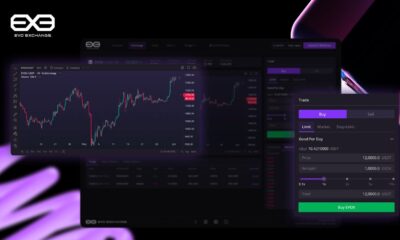Ethereum
Cardano’s Hydra and Leios Innovations Poised to Revolutionize Global Financial Systems, Reveals Charles Hoskinson

Charles Hoskinson, the founder of Cardano, has recently illuminated the path towards scaling the global financial Operating System (OS) with two pivotal innovations native to the Cardano blockchain. These revelations emerged in response to a discussion initiated by Dedium, a Decentralized GPU Computing Network that operates on Cardano, which praised the blockchain for its ability to handle a block containing transactions for 1600 unique recipients. This was particularly notable not only for the volume of transactions processed but also for the minimal transaction fee incurred, approximated at 5.16 ADA, or around $2.41.
Dedium’s observations underscore a critical challenge within the blockchain domain: achieving scalability and efficiency without compromising on cost. While various blockchains strive to address this issue, Cardano’s recent achievements suggest it is on a promising trajectory. Hoskinson’s response to Dedium’s post highlighted Cardano Hydra and Ouroboros Leios as key innovations designed to propel the blockchain towards unprecedented scalability and efficiency at low costs.
Cardano Hydra, a scalability solution that has been in development for several years, focuses on bundling transactions and processing them off-chain before synchronizing them with the blockchain. This approach aims to alleviate network congestion and facilitate the processing of a significant number of transactions simultaneously. On the other hand, Ouroboros Leios is engineered to enhance the network’s scalability further and efficiency by optimizing the transaction processing mechanism. The synergy between Hydra and Leios instills confidence in Hoskinson’s vision of establishing a global-scale financial operating system on the Cardano blockchain.
The ambition to rival traditional financial networks such as Visa and Mastercard is palpable within the blockchain community. Despite the innovative strides made by various protocols, including Cardano, the transaction per second (TPS) capability still falls short of these established financial giants. However, with Hoskinson’s optimism and the ongoing development efforts, the gap appears to be narrowing.
Cardano’s commitment to advancing its platform is evident in its status as one of the most actively developed protocols in the Web3 space, surpassing ethereum and other competitors in terms of developer activity according to GitHub commits. However, it is acknowledged that solana presents a faster protocol in comparison. Despite this, the continuous enhancements and the strategic focus on scalability and efficiency solutions like Hydra and Leios underscore Cardano’s potential to redefine the infrastructure underpinning global financial systems.
In a rapidly evolving digital economy, the pursuit of a scalable, efficient, and cost-effective blockchain infrastructure is more critical than ever. The initiatives undertaken by Cardano, guided by the vision of its founder Charles Hoskinson, signal a significant leap towards realizing a blockchain-based financial operating system capable of competing with, and potentially surpassing, traditional financial networks. As the blockchain landscape continues to mature, the innovations spearheaded by Cardano may well set new benchmarks for what is possible, offering a glimpse into a future where financial transactions are faster, more accessible, and significantly cheaper.
-

 Press Releases1 year ago
Press Releases1 year agoGaming Technologies of the New Time!
-

 Altcoins9 months ago
Altcoins9 months agoBitcoin Declines Below $80K: deVere CEO Nigel Green Remains Bullish on Long-Term Outlook Following Strategic U.S. Bitcoin Reserve Announcement
-

 Bitcoin1 year ago
Bitcoin1 year agoBitcoin Surges Past $64K as SEI and POPCAT Lead Daily Crypto Gains on September 25
-

 Altcoins9 months ago
Altcoins9 months agoCalls for Enhanced Discussion on Bitcoin as Brazil’s Reserve Asset: A Move Towards ‘Internet’s Gold’
-

 Press Releases2 years ago
Press Releases2 years agoEvo Exchange: Redefining the Decentralized Exchange Landscape
-

 Bitcoin5 months ago
Bitcoin5 months agoGrayscale Investments Submits Draft Registration for IPO, Aiming for Public Trading in U.S.
-

 Press Releases1 year ago
Press Releases1 year agoCODE, a Newly Born Project Brings Decentralization Back to the Main Menu
-

 Bitcoin5 months ago
Bitcoin5 months agoPeter Schiff Critiques New Crypto Legislation, Claims Bitcoin (BTC) Gains are Short-Lived




